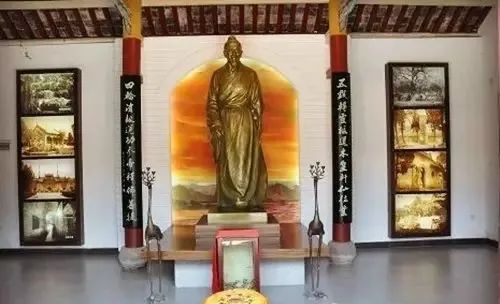Wu Qin Xi (五禽戏) – The Five Animal Frolics can be regarded as the earliest form of Medical Qigong in Chinese history, dating back to Eastern Han Dynasty (25-220). The creation of Wu Qin Xi was attributed the famous Chinese Physician and Surgeon Hua Tuo (110-207) who had great skills as a surgeon, acupuncturist, herbalist and knowledge of human anatomy. Wu Qin Xi is a set of Daoyin (deep stretching) and Tu Na (deep breathing) exercise that imitates the actions of animals based on the habits of the tiger, deer, bear, monkey and bird.
Founder

Hua Tuo (华陀. 145 – 208 CE) – often referred as the God of Chinese Medicine, benevelont master physician, also considered the first Chinese Surgeon. Besides treating his patients when they were ill, Hua Tuo was also keen to recommend physical exercises for people as a method of rehabilitation, recovery, and most importantly for prevention. Hua Tuo was known for his abilities in acupuncture, moxibustion, herbal medicine and medical daoyin exercises.
Some of the methods attributed to Hua Tuo include heart transplant surgery, mouth to mouth resuscitation, anesthesia, Medical Qigong – Wi Qin Xi (五禽戲, 5 Animal Play Qigong) based on the Tiger, Deer, Bear, Ape and Crane. It is thought that his discoveries included much more but were destroyed during the burning of his manuscript during his execution.
Hua Tuo had emphasized that regular physical exercise was key to maintaining and curing illness, as it strengthened the body, promoted circulation and improved health. His grave is found today in Xuzhou, Jiangsu and he is honored in the Huazu Temple in Peixian county. His innovations and miraculous abilities earned him the respect as the God of Chinese Medicine (神医).
“The human body needs exertion.” Hua Tuo told his disciple Wu Pu (吳普), “but it shouldn’t be pushed to the limit. Movement of the limbs facilitates the absorption of nutrients in food and enable the blood in the arteries to flow freely, preventing sickness from occurring. It’s like a door-pivot that never decays from bugs or worms because of the constant opening and closing. That’s why, when the ancient transcendent practiced duction, they strode like a bear and turned their head backward like an owl. They elongated their waist and limbs and moved all of their joints, seeking to stave off old age. I have a technique called ‘the exercise of the five animals’. The first is the tiger, the second is the deer, the third is the bear, the fourth is the ape, the fifth is the bird.
Method
The Five-Animal Qigong is practiced by imitating symbolically and physically the movements, breathing and sounds of the five animals. It consists of some standard forms of movements, spontaneous movements and sounds, and simple but effective techniques.The symbolic connotation of the animals can have great effects on state of mind and behaviour. The dignity and masculine power of the tiger, the elegance of the deer, the earthiness and soft strength of the bear, the graceful and free spirit of the bird and the liveliness and vigilance of the monkey, all imprint their marks on the consciousness and assist in building confidence and self-esteem.
Practice
Traditional Five Animal play is practiced through a series of set techniques/methods arranged by each of the animals :
- Tiger (14 methods)
- Deer (9 Methods)
- Bear (9 Methods)
- Ape (10 Methods)
- Bird (13 Methods)
Four Levels
Five Animal play has four types of levels which commence from the more physical and progresses to the more spiritual.
- Shape (Physical Practice)
- Breathing (Tuna Practice)
- Intention (Daoyin Practice)
- Spirit (Acending Practice)
